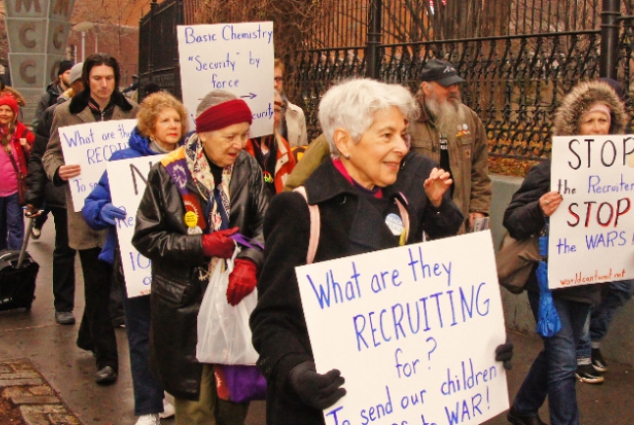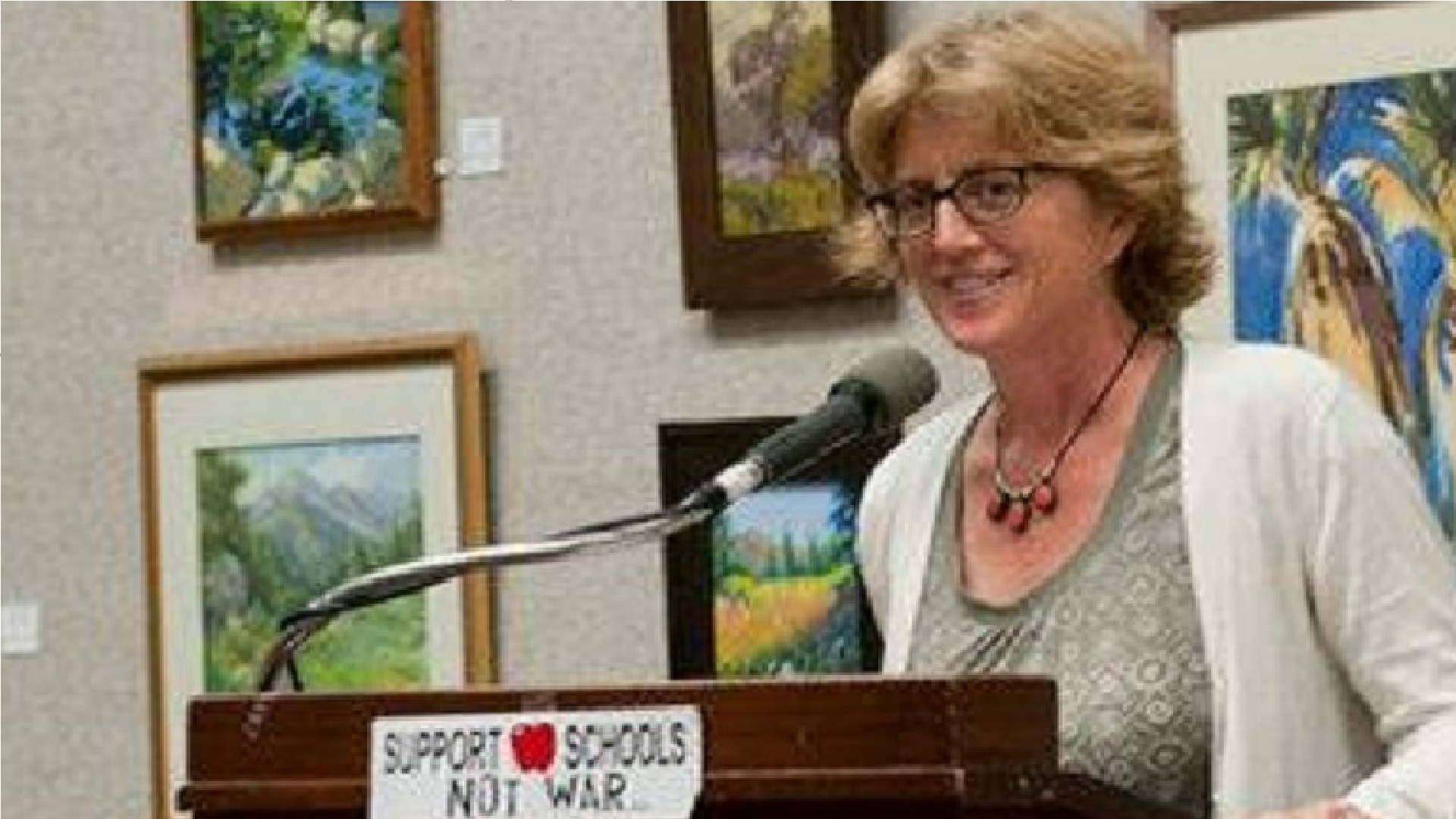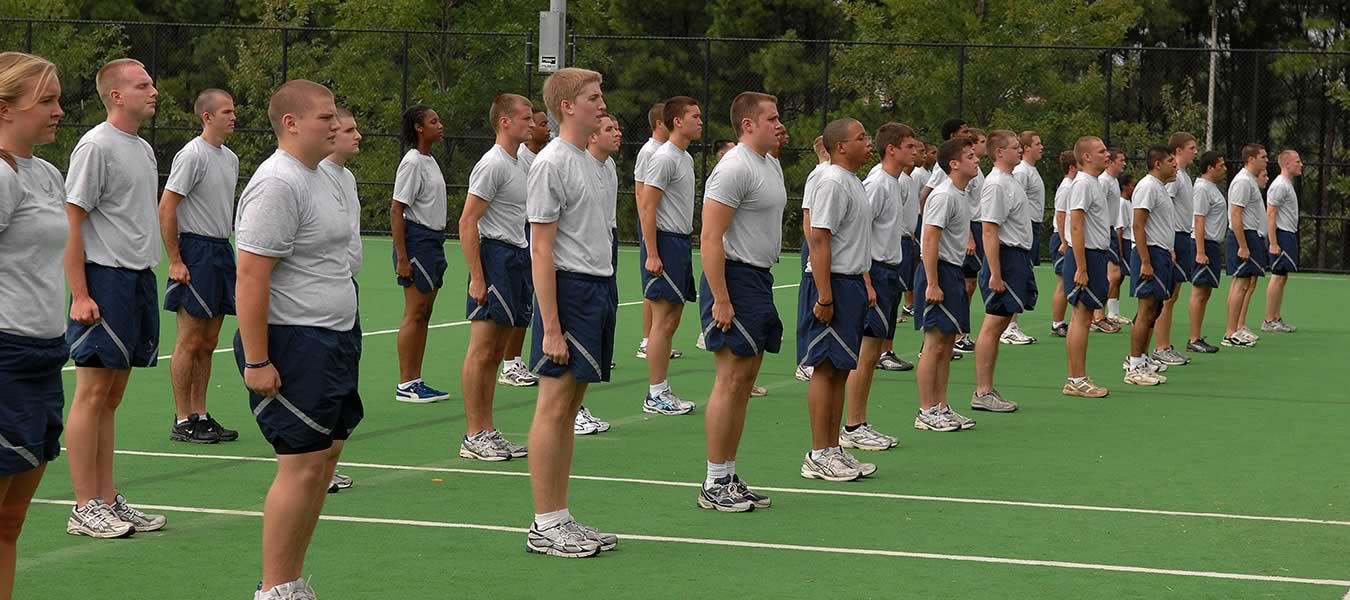By Seth Kershner & Scott Harding -
 The United States stands alone among Western nations in allowing military recruiters to work inside its educational system. Section 9528 of the 2001 No Child Left Behind Act requires that public high schools give the military as much access to campuses and student contact information as is given to any other recruiter. However, University of Kansas anthropologist Brian Lagotte finds that school officials do not fully understand this policy and often provide military recruiters unrestricted access to their campuses. Many schools allow military recruiters to coach sports, serve as substitute teachers, chaperone school dances, and engage in other activities. In some cases, recruiters are such a regular presence in high schools that students and staff regard them as school employees.
The United States stands alone among Western nations in allowing military recruiters to work inside its educational system. Section 9528 of the 2001 No Child Left Behind Act requires that public high schools give the military as much access to campuses and student contact information as is given to any other recruiter. However, University of Kansas anthropologist Brian Lagotte finds that school officials do not fully understand this policy and often provide military recruiters unrestricted access to their campuses. Many schools allow military recruiters to coach sports, serve as substitute teachers, chaperone school dances, and engage in other activities. In some cases, recruiters are such a regular presence in high schools that students and staff regard them as school employees.
The military does not advertise what it is doing in public schools. But for the past four years, we have been researching those who make it their business to closely monitor the actions of military personnel in schools: parents, students, military veterans, and citizens affiliated with the grassroots "counter recruitment" movement. Many of them told us that state education commissioners, district superintendents, school principals, and other policymakers react with surprise at their efforts to rid schools of the undue influence of military personnel. In fact, most public officials are unaware of the extent of the military's presence in education settings and the ways in which the Pentagon can access private data about high school students. Until now, there has been a lack of hard data describing the extent of military involvement in schools.
Last year, in response to a Freedom of Information Act request, the U.S. Army provided us with documents about recruiter activities in Connecticut high schools during the 2011-12 academic year.

 During the Second Battle of Fallujah in November 2004, 1st Lt. Jesse A. Grapes saved the lives of three wounded marines in his platoon by entering a burning house, where he encountered the enemy soldier who had been firing at his troops. Six years later Grapes was named headmaster of Benedictine College Preparatory, a Catholic military school in Richmond, Virginia. The June 2010 issue of the school’s newspaper, The New Chevron, called Grapes a “patriotic war hero.”
During the Second Battle of Fallujah in November 2004, 1st Lt. Jesse A. Grapes saved the lives of three wounded marines in his platoon by entering a burning house, where he encountered the enemy soldier who had been firing at his troops. Six years later Grapes was named headmaster of Benedictine College Preparatory, a Catholic military school in Richmond, Virginia. The June 2010 issue of the school’s newspaper, The New Chevron, called Grapes a “patriotic war hero.”
 Monica A. F. Lounsbery, Kathryn A. Holt, Shannon A. Monnat, Thomas L. McKenzie, and Brian Funk - Physical inactivity is receiving growing attention given its documented relationship to a variety of chronic health (
Monica A. F. Lounsbery, Kathryn A. Holt, Shannon A. Monnat, Thomas L. McKenzie, and Brian Funk - Physical inactivity is receiving growing attention given its documented relationship to a variety of chronic health (